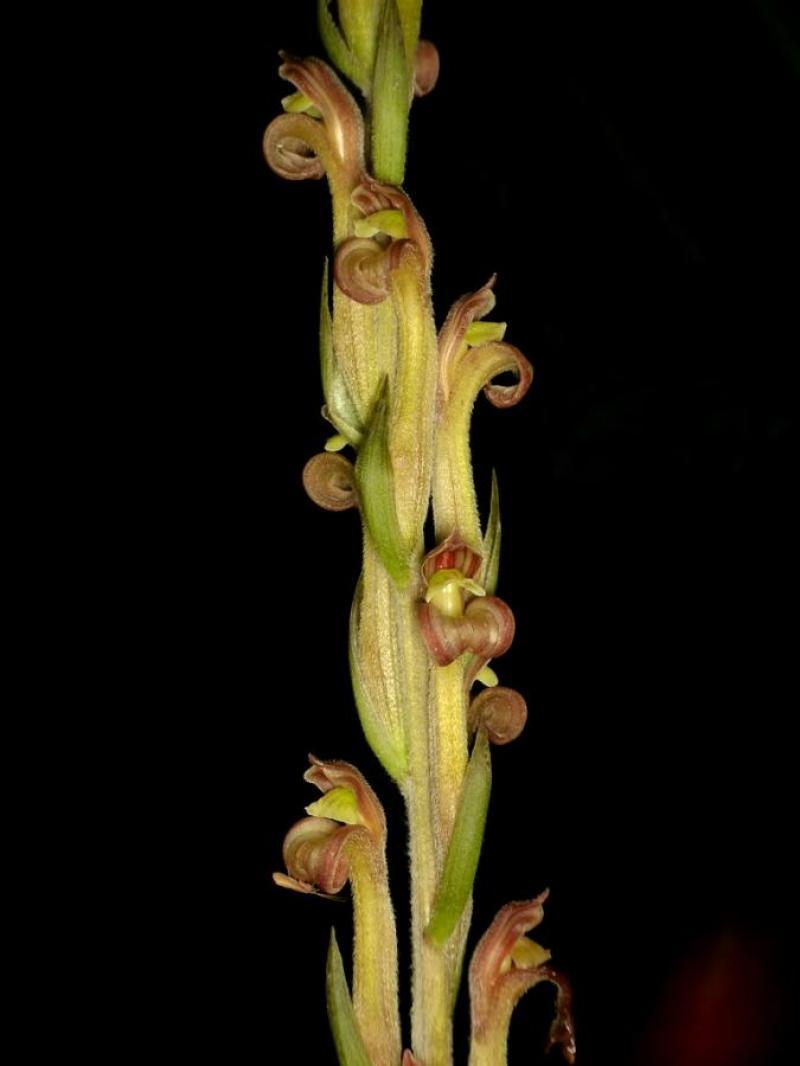Sarcoglottis grandiflora
Also known as: The Large Flower Sarcochilus or Sarcoglottis acaulis var. grandiflora Spiranthes picta var. grandiflora in the subfamily: Spiranthoideae
Native to: Argentina Brazil Paraguay Provincia de El Oro - Ecuador
General Information
The Large Flower Sarcochilus is a small warm growing terrestrial orchid belonging to the sub family Spiranthoideae native to Argentina, Brazil, Paraguay, and Ecuador.
Plant Description
Each new growth has numerous arching lance shaped leaves that grow to 3.5-40cm long
Flowers
Numerous blossoms appear during Winter and Spring
Blooming Season
- Spring
- Winter
Substrate(s)
- Fine
- Bark
- Charcoal
- Treefern
- Spaghnum Moss
- Perlite
- Sand
Care Notes
These orchids grow on the forest floor so are used to rich soil containing plenty of organic matter that is always moist (but not always wet), and prefer constant conditions in terms of humidity, temperature and water supply. They may not be as forgiving as epiphytes in regards to sudden changes in growing conditions so it is wise to ease them into new conditions over a the space of a few days, and repot as infrequently as possible.
Keep an eye on the plants condition regularly as they can decline suddenly if the conditions are not just right. It is more important to keep water supply constant rather than frequent - overwatering often causes rot which can quickly set in, especially in warmer conditions.
These can be grown in shady, moist areas in the garden, supplied they have protection from abrupt changes caused by the elements, e.g. dry winds, frost etc. Being grown around companion plants such as ferns and bromeliads will help build and retain the humidity they require throughout the year.
Climate
Grows at low to high elevations. Rainfall ranges from 3mm to 53mm per day, heaviest in October and lightest in March. Temperature ranges from 17C to 30C, highest in June (18C to 30C) and lowest in May (17C to 28C).
Watering
These orchids prefer a wet-dry cycle between waterings, they should be watered frequently but only when the moisture is approaching dryness, where the pot feels light and/or the media looks dry. Keep an eye on mounted orchids in warm weather as they may dehydrate quickly.
Fertiliser
Apply liquid based fertiliser per recommended directions. They can benefit from a high phosphate fertiliser leading up to flowering season, followed by a high nitrogen fertiliser when new growth appears, and a balanced fertiliser in other times. These orchids can also tolerate slow release fertiliser applied 1-2 pellets per cup (250ml) of media.
Use balanced fertiliser during Spring and Summer. Apply fertiliser regularly at half strength year round. Use a high Nitrogen fertiliser during Spring and Summer. Use a high Phosphorous fertiliser during Summer.Potting
This orchid prefers a fine, well draining media. Avoid commercial potting mixes as they may have 'wetting agents' that retain water for too long. A simple mix made up of 20% sand, 50% peat or moss, with the remaining 30% made up of decomposed bark and leaf litter would be adequate. Adding some charcoal to the mix will also help it last longer.
Repotting depends on how wet the media is usually. Every 2-3 years would suffice, or whenever the media shows signs of clumping, staying wet for too long, or smells foul.
Repotting is best done annually.










